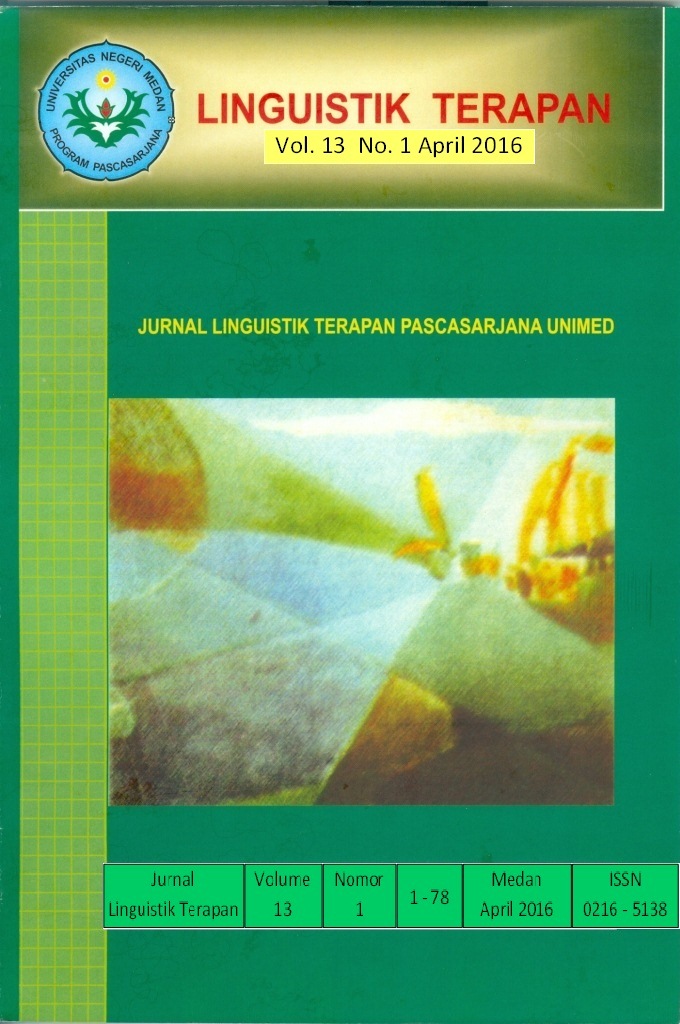The Acquisition of Affixed Words by Five Year Old Indonesian Children
DOI:
https://doi.org/10.24114/lt.v13i1.4917Abstract
The aims of this study were to find out the formal affixes are acquired by the five year old Indonesian children and how the five year old male and female children acquired the formal affixes in Bahasa Indonesia. This study employed descriptive qualitative design. The data were the transcription of recorded observation and interview using audiovisual recorder in children interaction in doing their daily activities at home. The subjects were two males and females children age five years old who lived on Jalan Marelan VII, Medan. The data were analyzed by applying Interactive Model by Miles and Huberman (1994). The findings of this study revealed that, five year old children have acquired formal affixes namely; me-, di-, ber-, ke-, ter-, pe-, se-, -an, -kan, -i, ke-an, di-i, di-kan and per-an well. However there were some affixes that did not emerge in children conversation namely prefix per- and circumfix pe-an and ber-an. The way five year old children acquired formal affixes in Bahasa Indonesia namely; the first, is influenced by their environment such as from their family, relatives, caregivers and neighbors and the second is from the external factor such as from song and television program. Moreover, male children dominantly used prefix di- while female children dominantly used suffixes “an and “i. Keywords: affixes; children; circumfix; prefixes; suffixesDownloads
Published
2016-04-29
How to Cite
Hastuti, S. (2016). The Acquisition of Affixed Words by Five Year Old Indonesian Children. LINGUISTIK TERAPAN, 13(1). https://doi.org/10.24114/lt.v13i1.4917
Issue
Section
Articles






